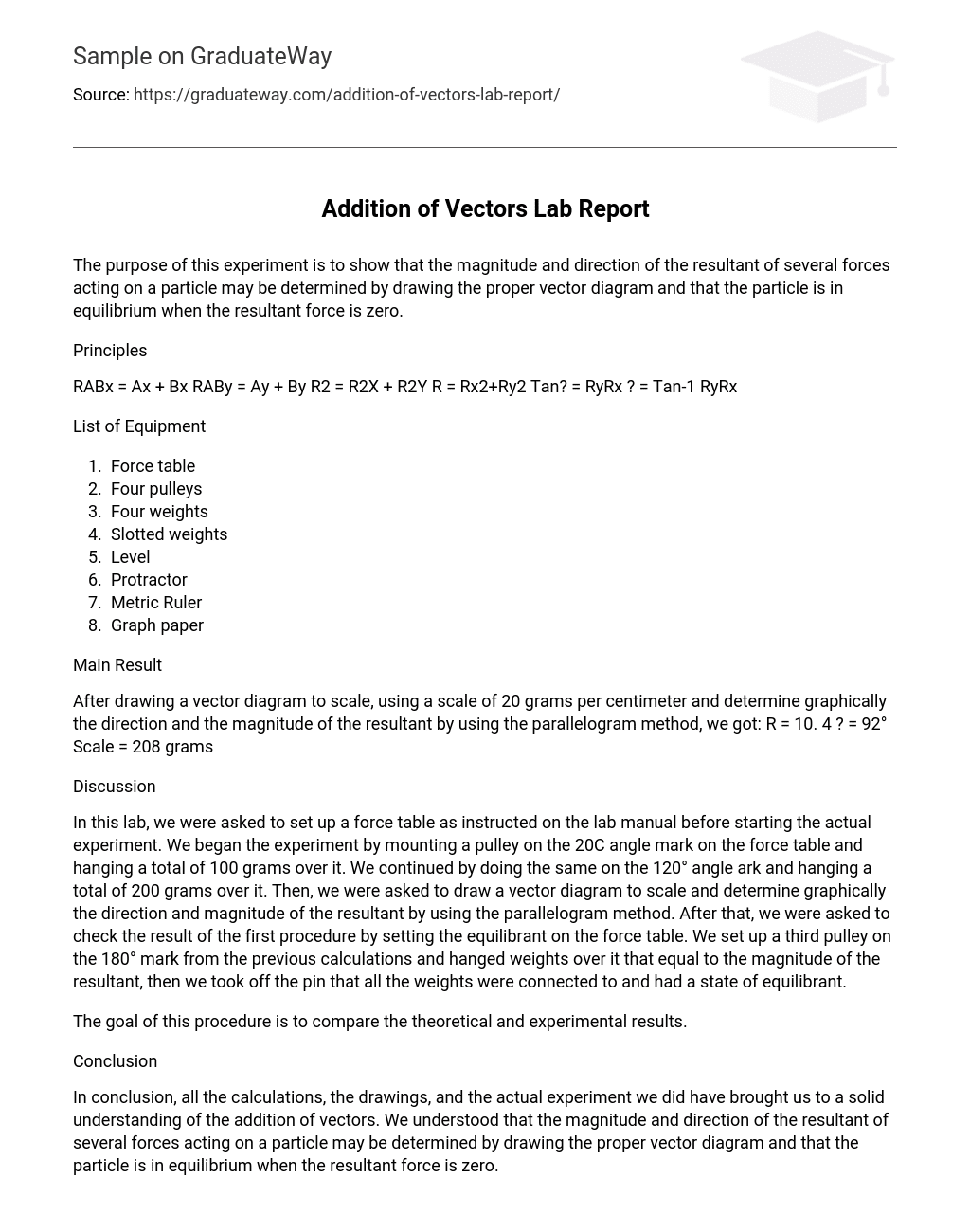The purpose of this experiment is to show that the magnitude and direction of the resultant of several forces acting on a particle may be determined by drawing the proper vector diagram and that the particle is in equilibrium when the resultant force is zero.
Principles
RABx = Ax + Bx RABy = Ay + By R2 = R2X + R2Y R = Rx2+Ry2 Tan? = RyRx ? = Tan-1 RyRx
List of Equipment
- Force table
- Four pulleys
- Four weights
- Slotted weights
- Level
- Protractor
- Metric Ruler
- Graph paper
Main Result
After drawing a vector diagram to scale, using a scale of 20 grams per centimeter and determine graphically the direction and the magnitude of the resultant by using the parallelogram method, we got: R = 10. 4 ? = 92° Scale = 208 grams
Discussion
In this lab, we were asked to set up a force table as instructed on the lab manual before starting the actual experiment. We began the experiment by mounting a pulley on the 20C angle mark on the force table and hanging a total of 100 grams over it. We continued by doing the same on the 120° angle ark and hanging a total of 200 grams over it. Then, we were asked to draw a vector diagram to scale and determine graphically the direction and magnitude of the resultant by using the parallelogram method. After that, we were asked to check the result of the first procedure by setting the equilibrant on the force table. We set up a third pulley on the 180° mark from the previous calculations and hanged weights over it that equal to the magnitude of the resultant, then we took off the pin that all the weights were connected to and had a state of equilibrant.
The goal of this procedure is to compare the theoretical and experimental results.
Conclusion
In conclusion, all the calculations, the drawings, and the actual experiment we did have brought us to a solid understanding of the addition of vectors. We understood that the magnitude and direction of the resultant of several forces acting on a particle may be determined by drawing the proper vector diagram and that the particle is in equilibrium when the resultant force is zero.





